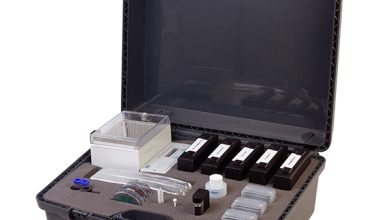Breast Reconstruction Surgery After Mastectomy

What Is Breast Reconstruction?
Many women who have a mastectomy – surgery that removes an entire breast to treat or prevent breast cancer – opt for rebuilding their breasts after removal. If you have had a mastectomy due to breast cancer, you might decide to go for breast reconstruction surgery.
This surgery will help restore the balance between the breasts. The extent of reconstructive surgery may vary depending on the type of mastectomy performed and the tumor’s location.
Breast reconstruction is not a cosmetic surgery but rather a reconstructive surgery and is part of a disease’s treatment.
Different Reconstruction Options:
Before deciding on reconstruction surgery, consult your doctor about your requirements, health conditions, and any past surgery report.
Implants require stretching the skin with a tissue expander inserted beneath the body surface before filling it with silicone gel or saline after a few weeks. The tissue expander uses saline for expansion, which takes a few weeks.
Some women experience some discomfort during this procedure, but the result is satisfying. Implants can rupture, which causes pain and possible infection. Surgery may be necessary to either extract or replace them.
Flap reconstruction surgery uses the tissue from a woman’s body to reconstruct her breasts. This typically involves removing some of her stomach muscles, fat, and blood supply for transferral into her chest.
Occasionally, surgeons keep the tissue connected to its blood supply. This is called pedicle or tunneling surgery. It provides a better chance for survival than other procedures but may not result in an ideal aesthetic outcome for the breast.
A free-flap procedure requires that the tissue is detached from its original location and connected to a blood supply nearby. It poses more risk than other procedures but has the potential for success when reconstructing breasts because it restores them to their natural appearance. One of the main risks of this surgery is that the blood vessels can become clogged, and the flap might die.
Flap reconstruction includes:
- DIEP flap: Tissue is taken from the abdomen and contains only skin, blood vessels, and fat without the underlying muscle tissue. It is free-flap surgery.
- Latissimus dorsi (LD) flap: The tissue originates from the middle and sides of the back. It is Pedicled when used for breast reconstruction.
- SIEA flap: Tissue comes from the abdomen. It does not involve cutting muscles and is a free flap that involves different blood vessels. However, this flap may not be ideal for some women due to insufficient or nonexistent blood vessels.
- TRAM flap: Tissue is taken from the lower abdomen area but includes muscle. It is either pedicled or free-flap.
How Long Is The Surgery?
Preparation for the surgery, including anesthesia, takes up to two hours. The surgery itself lasts from one to six hours. After surgery, expect about two to three hours of recovery time before shifting to a hospital room.
Aftercare And Recovery From Breast Reconstruction:
You may experience some temporary discomfort post-surgery Pain medication will be available upon request. During your stay in the hospital, staff members will monitor your condition throughout this time.
Post-surgery, use your arms; however, avoid strenuous activities like pulling up or lifting heavy objects. On the first day after surgery, you will probably only need someone to help you in and out of bed. You can usually walk around without assistance on the second day. After surgery, you may need an intravenous drip for 24-48 hours, a urinary catheter all night (or until you walk), and some stitches near your scars. When going home, make sure you know how to care for your stitches.
The hospital stay varies on the type of surgery and the way you recover. With implants, the average length is one or two days, while flaps may take anywhere from five to six days.
Most women resume normal activity within six to eight weeks of surgery.
After the surgery, you will most likely feel some soreness, swelling, and bruising for up to three weeks. Your surgeon might instruct you on how to take care of your wounds at home, such as applying medicated gauze, changing bandages, bathing, and showering.
You will need regular checkups for the first few weeks after getting your new breasts. For those with a temporary expander, it will be expanded with saline about once per week on average until reaching the desired size(usually within six to ten office visits).
Continue doing self-exams of your breasts every month, and get annual mammograms.
Side Effects Of Reconstruction Surgery:
- Infection on the treated site.
- Pain & Discomfort.
- Itching.
- Numbness.
- Fluid accumulation beneath the wound.
Best Time For Reconstruction Surgery:
The timing of reconstruction surgery varies depending on the patient’s goals, stage of treatment, and medical history. Reconstruction can happen at the time of surgery to remove the breast tissue or later when you have completed treatments for cancer.
If you’re undergoing chemotherapy or radiation treatments, the surgeon postpones the reconstruction process until they finish the cancer treatments.
Final Thoughts:
Breast reconstruction surgery has evolved drastically over the years so patients can have much better outcomes. You may use breast implants or your tissue when undergoing reconstructive surgery.
Living life without a breast affects each woman differently. It is an individual’s decision, but difficult to decide.
You do not need to undergo reconstructive surgery. You can wear external breast forms or pads or make no changes. However, the surgery not only changes how you look but can also provide certain psychological benefits. It might give you and your loved ones a feeling of well-being.




